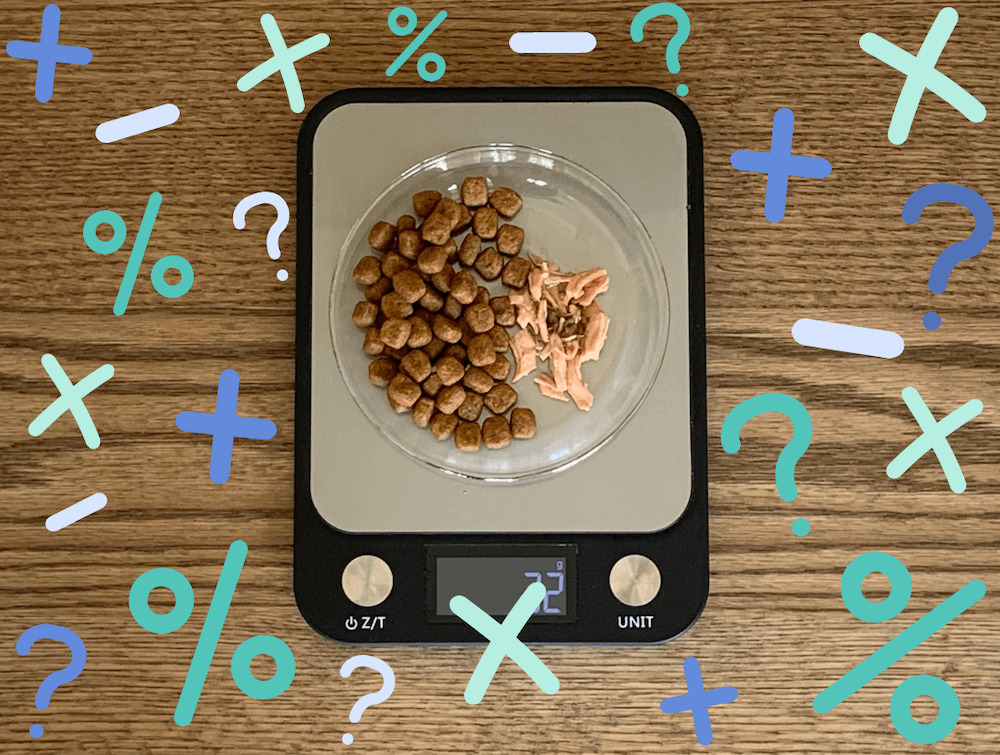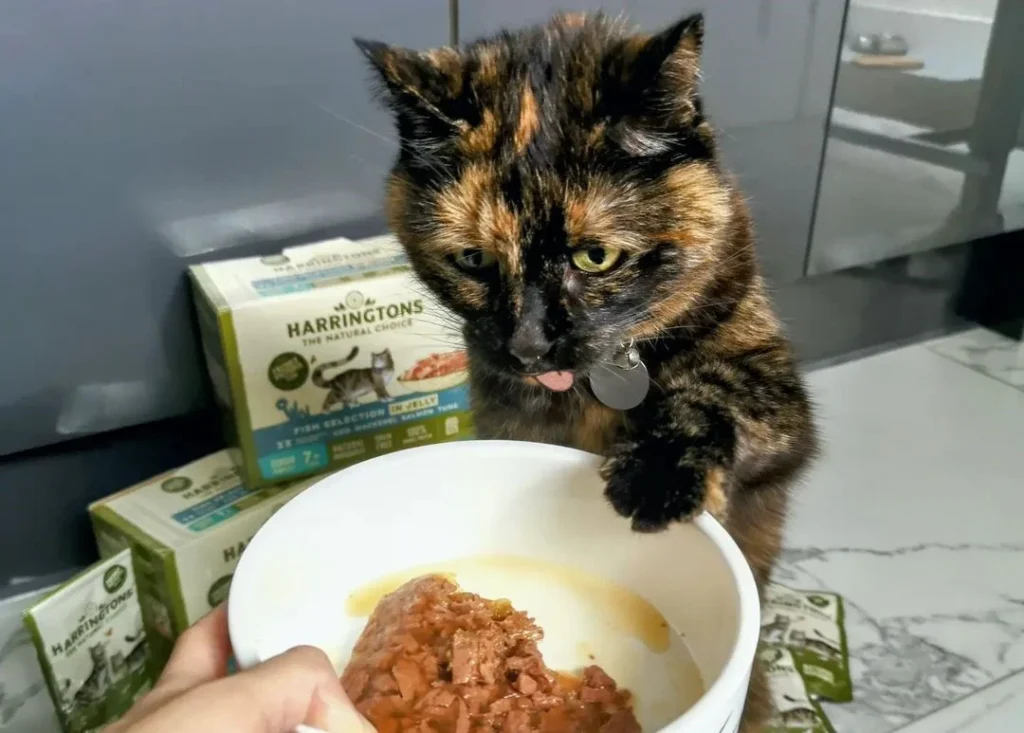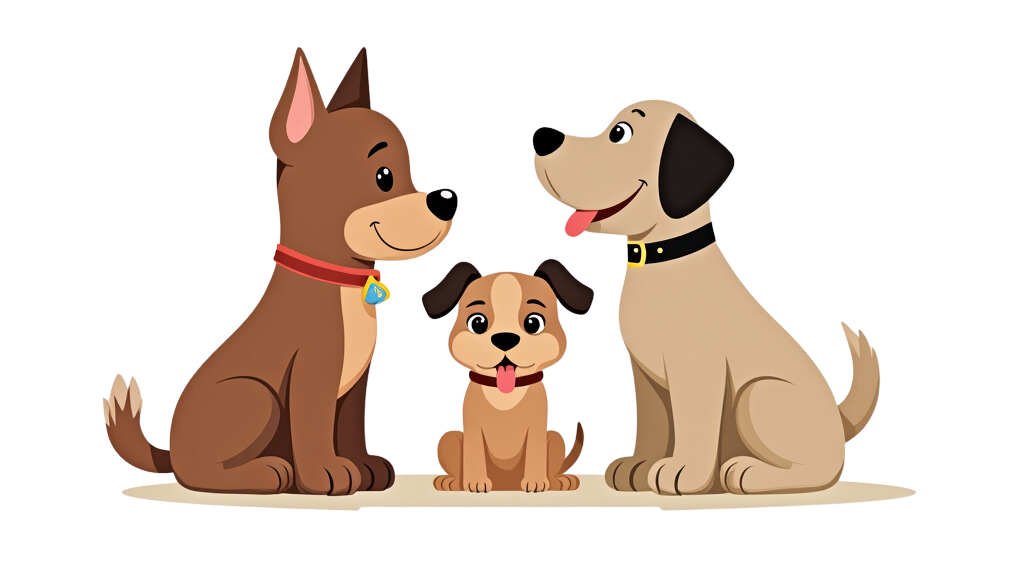When I first adopted my cat, Whiskers, I had no idea how much to feed him. The little guy acted starving every time I walked past the kitchen, meowing dramatically as if I had never fed him in his life. Naturally, I gave in—because who can resist those big, pleading eyes? Fast forward a few months, and I had a slightly rounder version of Whiskers, who could no longer fit inside his favorite cardboard box.
Lesson learned: Feeding a cat isn’t as simple as filling the bowl whenever they ask for it (because trust me, they always ask for it).
So, how much should you actually feed your cat? Let’s break it down—without letting your feline turn into a furry bowling ball.

1. Consider Your Cat’s Life Stage
Just like humans, cats have different dietary needs depending on their age.
Kittens (Up to 12 Months) – The Eating Machines
Kittens grow fast, which means they need a lot of energy. Expect to feed them:
- 3-4 small meals per day
- High-protein, high-fat kitten food
- Free-feeding (leaving food out all day) may work for very young kittens but should be phased out as they grow

Adult Cats (1-7 Years) – The Maintenance Phase
Most adult cats thrive on:
- Two meals a day (morning and evening)
- A balance of wet and dry food for hydration and dental health
Senior Cats (7+ Years) – The Gentle Grazers
Older cats may have slower metabolisms and need:
- Smaller, more frequent meals to aid digestion
- Senior-specific cat food with joint-supporting ingredients
- Close monitoring for weight changes
👉 Moral of the story? Feed according to age, not just appetite—because some cats (cough Whiskers cough) will eat like they’re still growing, even when they’re well past kittenhood.

2. How Many Calories Does Your Cat Actually Need?
Not all cats burn calories at the same rate. A lazy housecat (who spends 90% of the day napping) will need fewer calories than a playful outdoor adventurer.
Here’s a general rule of thumb:
- Indoor Cats: ~20 calories per pound of body weight per day
- Active/Outdoor Cats: ~25-35 calories per pound
- Overweight Cats: Adjust to a vet-recommended calorie-controlled diet
Real-Life Example:
Let’s say you have a 10-pound indoor cat:
- 10 lbs x 20 calories = 200 calories/day
Now, check the food label. If a cup of dry food has 400 calories, your cat only needs half a cup per day (plus or minus some wet food).
👉 Pro tip: Don’t guess portion sizes—measure them. It’s way too easy to overfeed when eyeballing it.

3. Reading the Cat Food Label: It’s Not Just Marketing
Most cat food bags have a feeding guide, but take them with a grain of salt. Manufacturers tend to overestimate portions to sell more food. Instead, start with their recommendation and adjust based on your cat’s weight and energy level.
Dry Food vs. Wet Food: What’s the Difference?
- Dry Food: More calorie-dense, meaning smaller portions are needed
- Wet Food: Contains more moisture, which is great for hydration and portion control
👉 Best approach? A mix of both—dry for crunch, wet for hydration.

4. Keeping Your Cat at a Healthy Weight
Your cat won’t step on a scale and tell you they’re gaining weight (though wouldn’t that be nice?). Instead, you have to monitor their body condition.
Here’s a quick way to check:
- Can you feel the ribs easily? If yes, they’re likely at a good weight.
- Do they have a waist when viewed from above? If not, time to cut back on portions.
- Does their belly sag when they walk? Uh-oh. That’s not just “fluff.”
👉 Whiskers Update: After realizing he was more “round” than he should be, I adjusted his portions and stopped falling for his “I’m starving” act. A few months later? He reclaimed his favorite cardboard box.

5. Adjusting for Activity Level
Some cats are couch potatoes, while others zoom around like they just drank an espresso.
- Low-Activity Cats: Stick to the lower calorie range (~20 cal/lb).
- Active Cats: Bump it up slightly to meet their energy needs.
👉 Fun Fact: Some indoor cats get bored and eat out of habit. If that sounds like your cat, introduce puzzle feeders or interactive toys instead of extra snacks.

6. Special Diets & Considerations
Every cat is unique, and some may have special dietary needs.
- Overweight Cats: Reduce portions gradually (sudden dieting can be dangerous). Look for weight-control formulas.
- Underweight Cats: Higher-calorie food or more frequent meals.
- Medical Conditions: Cats with diabetes, kidney disease, or food allergies need vet-approved diets.

7. Feeding Tips for a Happier, Healthier Cat
- Stick to a schedule. Cats love routine—feed them at the same times every day.
- Use a measuring cup. Guessing = overfeeding.
- Limit treats. (Even when they give you that look). Treats should be less than 10% of their daily calories.
- Always provide fresh water. Especially if feeding dry food!

8. When to Call the Vet
If your cat’s eating habits suddenly change, don’t ignore it. Call your vet if you notice:
- Sudden weight loss or gain
- Loss of appetite for more than 24 hours
- Vomiting or diarrhea after meals

Final Thoughts: Keep It Balanced
Feeding your cat isn’t just about filling the bowl—it’s about finding the right balance for their age, activity level, and overall health.
Whiskers is now at a healthy weight, and while he still tries to convince me he needs extra snacks, I’ve learned to stay strong. (Mostly.)🐱 How do you handle your cat’s portion sizes? Share your tips (or funny feeding stories) in the comments below!

